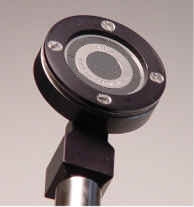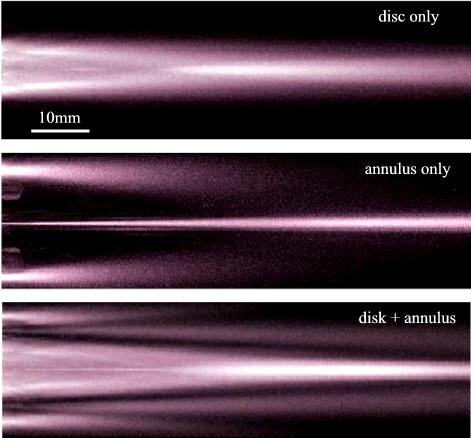home
> products
> BAT's
> BAT
species > BAT-4
BAT-4 dual-element BAT®
Description:
The BAT-4 is a dual-element BAT® transducer, consisting of a central disc-shaped element surrounded by an annulus element. Each of the two elements can be operated independently or together at the same time in order to create a variety of radiation profiles and experimental possibilities from a single transducer. The presence of the annulus in particular, with its long narrow axial beam, leads to a degree of control over radiation profiles not present in other types of BAT transducers. Also, because the BAT-4 elements are independent, each can be driven as a source while the other operates as a receiver, and this allows for sensitive pulse echo work using optimized drive-receive electronics not compromised by the presence of a diplexer. The MicroAcoustic BAT-4 transducer operates equally well in pulse, chirp or toneburst modes of operation.
contact us >> for pricing & availability
Specifications:
- type: dual-element disc-annulus transducer
- active elements: 10mm Ø central disc & surrounding annulus
- ultrasonic bandwidth in air: 200kHz ~ 1.5MHz
- housing dimensions: 34mm Ø x L 9.5mm
- electrical connectors: gold MCX on rear of housing
- mounting: axial / transverse mounting via 1/4"-20 threaded housing mount
Typical beam profiles:

axial direction =>
The above beam profiles were obtained experimentally for a BAT-4 source transducer operating under pulsed excitation. The images were obtained using MicroAcoustic's proprietary miniaturized scanning recievers. The top image shows the field that results when only the central disc element is actively driven and is typical of the pulsed field for a 10mm plane-piston. The middle image shows the ultrasonic field that results when only the annulus is active. Here, the field is intense directly in front of the annulus near to the transducer, but further out along axis there remains only a dominant and narrow central ultrasonic beam. This tight axial beam can be followed all the way back along axis to the transducer surface, where it becomes even narrower despite the lack of any active area within the central region of the transducer. The final beam profile (on bottom) is typical of the field that results when both elements are actively driven together. In this case, the field is basically a superposition of the disc-only and annulus-only fields, with the net effect being to give some axial emphasis to the disc-only response. Such ability to provide a variety of very different radiation profiles from one transducer makes this a rather versatile probe within the MicroAcoustic BAT® lineup.
www.microacoustic.com